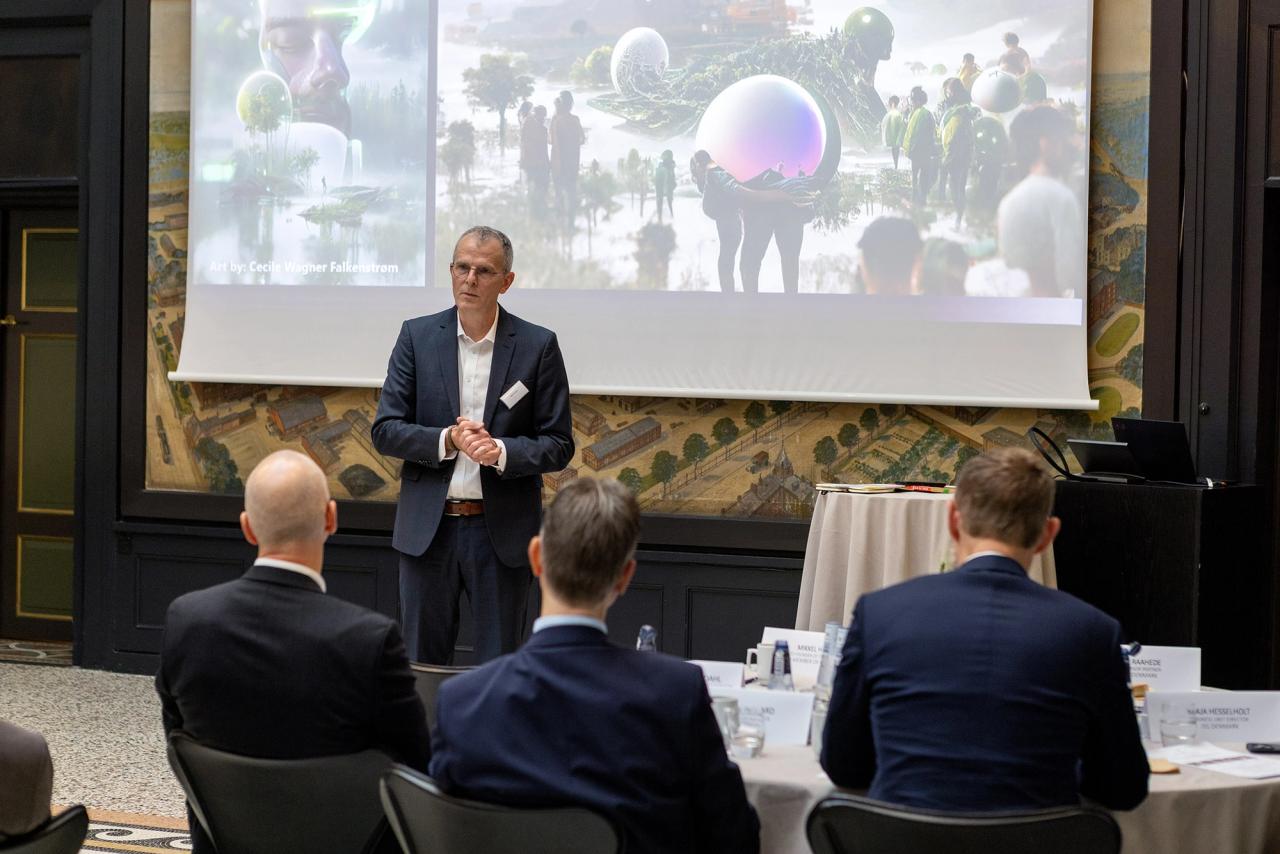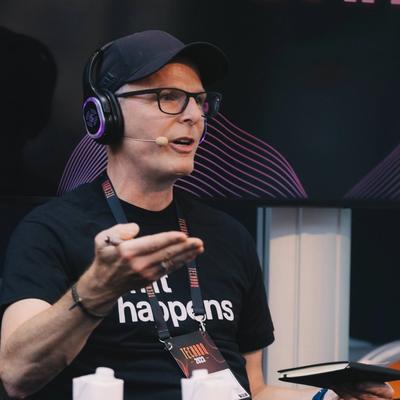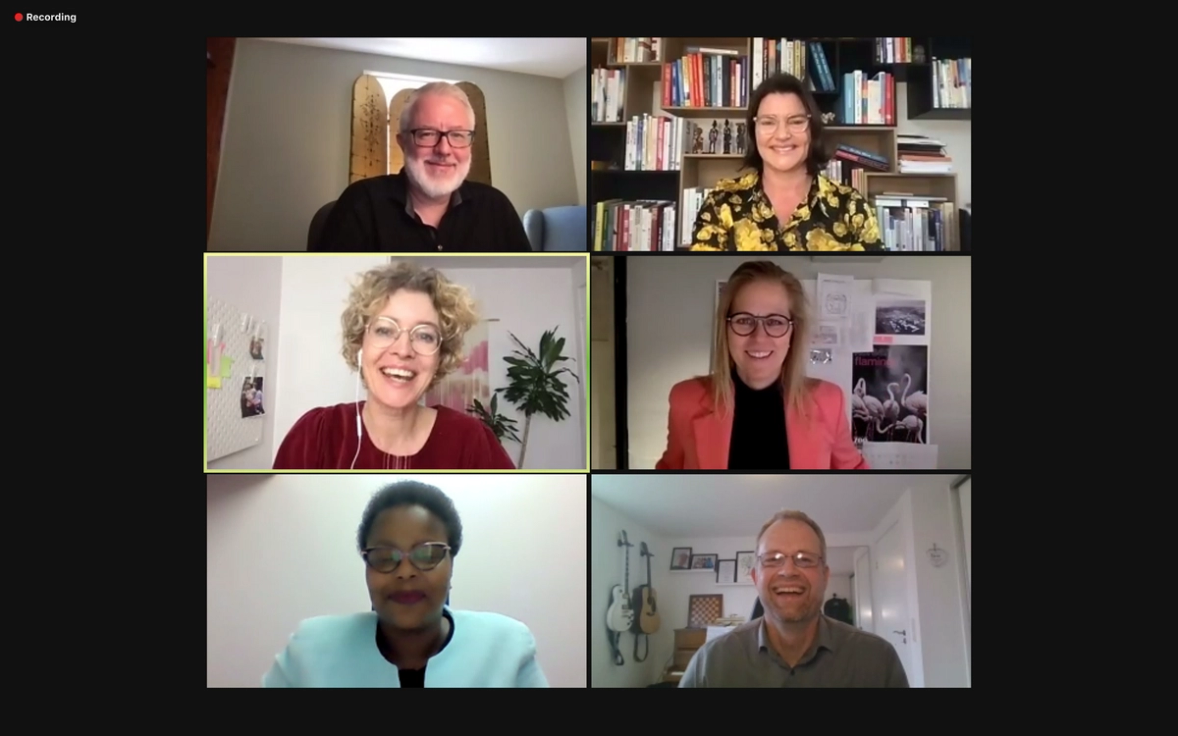As co-founder of Tradeshift, I had the privilege of working in a small team in a Copenhagen garage and seeing it grow into a multinational company with nearly 1,500 employees. That kind of rapid scaling is a trial by fire. You are forced to solve problems you never anticipated, and the ones you did anticipate - like fostering innovation and building a diverse team - become exponentially more complex.
We, like many modern organizations, were committed to diversity. But commitment and execution are two different things.
Today, this challenge has taken on a new, urgent dimension. We are facing a technological wave so profound it will reshape every role in every company: Artificial Intelligence. And as leaders, we are already failing our first test.
I was recently asked to speak at the Danish Diversity Council’s CEO meeting about this very intersection: the future of inclusion in the age of AI. The data is alarming. Recent research indicates a significant gender imbalance in the adoption, use, and resulting productivity gains from AI. Some studies show adoption rates up to 25% lower for women than for men.
The proposed reasons are deeply concerning, ranging from stereotypes that view a woman using AI as 'cheating' to the fact that generative models have learned from our existing, biased society.
Whatever the reason, the effect is the same and it is disastrous for the diversity agenda: widening productivity gaps and a profoundly negative impact on careers and career opportunities. As leaders, we risk letting this become a self-fulfilling prophecy.
How do we solve this? How do we fix the diversity challenges we already have, let alone this new, accelerated one?
My experience has taught me that good intentions are not enough. You need a deliberate effort and a structured approach. The answer I found came from an unlikely place: a framework designed for corporate innovation and disruption.
It’s called "Zone to Win", a model developed by Geoffrey Moore. While it was created to help incumbents fight off startups, I’ve found it’s not only a powerful tool for driving innovation but is also the single best framework I’ve found to address systemic diversity challenges.
It provides a blueprint for turning your most innovative spaces into a powerful leadership accelerator for diverse talent.
Part 1: The "Performance Zone" and Its Structural Bias
To understand the solution, we must first be brutally honest about the problem. Why do so many D&I initiatives fail to create a sustainable pipeline of diverse leaders?
The problem isn't (just) your people; it's your structure.
Geoffrey Moore’s model divides a business into four distinct zones. The most dominant, and the one we all know, is the Performance Zone.
- This is your core business.
- It's your "cash cow," built for execution, profit, and "making the number".
- It drives topline revenue and is optimized for incremental, secure, and validated growth (what Moore calls "sustaining innovations").
The Performance Zone is essential. It pays the bills. But here is the hard truth I learned scaling Tradeshift: The Performance Zone is structurally biased against diversity.
It is a machine built to reward conformity. It lionizes leaders who "look and think like last year's winners". The skills that thrive here are optimization, execution, and risk mitigation. It’s not a place that naturally rewards non-traditional thinking, radical experimentation, or a resume that doesn't follow a perfect, linear path.
When we try to "fix" diversity by simply forcing it into the Performance Zone, we're asking diverse talent to succeed in an environment structurally designed to favor the status quo. They face higher scrutiny, more pressure to assimilate, and are often the first to be cut when "the numbers" are at risk.
This is where most D&I initiatives stall. They are treated as a cost to the Performance Zone, not an investment in the future.
Part 2: Using "Zone to Win" as a Diversity Talent Accelerator
The power of Moore's model is that it gives us three other zones to work with. Responsible leadership, I learned, is the discipline of funding all four zones appropriately and, crucially, supporting the very different leadership styles each one requires.
Here are the other three zones:
- The Productivity Zone: This is your back office - HR, Finance, IT, and other functions. It’s built for efficiency and cost-saving. For HR and L&D leaders, this is your home base, and it's where you'll deploy policies and tracking.
- The Incubation Zone: This is your R&D lab, built for learning. It’s where you place small, speculative bets. It's managed like early-stage venture capital, where you test, measure, and learn. The key here is fostering innovation and building diverse teams.
- The Transformation Zone: This is where the CEO’s big bets live. This zone is for disruptive innovations that have the potential to become the next Performance Zone. It’s the "hyper-growth" engine designed to catch the next wave.
Here is the essential D&I lesson: You must use the Incubation and Transformation Zones as your Diversity Talent Accelerators.
These zones are the ideal proving grounds for high-potential diverse talent precisely because they are not the Performance Zone. The skills required to succeed here are entirely different: experimentation, courage, and non-traditional thinking.
This is your framework for action:
- Step 1: Identify Diverse Talent. Look for high-potential individuals in your organization (or hire them) who are not thriving in the Performance Zone's rigid structure. Look for courage, curiosity, and a bias for action.
- Step 2: Assign to the Incubation Zone. Give this talent a real project. Not a "diversity committee." A small, speculative bet with a small team. Task them with exploring a new technology, a new market, or a new customer problem. Give them permission to "ask for forgiveness, not permission" and to fail fast.
- Step 3: Coach and Support. This is critical, and where professional coaching becomes invaluable. The Incubation Zone is ambiguous and high-pressure. These emerging leaders need support in navigating failure, managing small teams (perhaps for the first time), and learning the "lean startup" methodology.
- Step 4: Graduate to the Transformation Zone. When one of these small bets shows promise - when it "moves out of incubation and receives larger investments" - that leader moves with it. They now have a mandate from the CEO to scale their idea.
- Step 5: Create the Pipeline. This is the "proving ground". That leader is now given real P&L responsibility. They are building the next core product. When this project becomes the company's new "core business," that leader graduates with it, becoming a new head of a Performance Zone.
You have just created a Diverse Leadership Talent Pipeline. You have given diverse talent the one thing they lacked: an alternative, undeniable, and home-grown track to the top. They didn't just "fit in" to the old Performance Zone; they built the new one.
Part 3: Using the Framework to Win the AI Adoption Challenge
Now, let's return to that critical AI gender gap. How do we use this D&I-enabled innovation framework to solve this specific, urgent problem?
If we do nothing, the Performance Zone will handle the AI transition. And it will do so in the only way it knows how: as a "sustaining innovation". It will buy "commercial off-the-shelf AI-products" to make existing processes more efficient. The "winners" who adopt it fastest will be rewarded, and the 25% gap will become a permanent career chasm.
This is a losing strategy. The "Zone to Win" model gives us a way to fight back.
Instead of letting the Performance Zone just optimize with AI, you must use the Incubation Zone to experiment with it.
You create small, dedicated "Emerging Technologies Teams". You set up "sandbox environments" and allow for "ideation and vibe-coding". You task these teams with "disruptive innovations" - figuring out how AI can redefine the business, not just make it 10% faster.
And here is the key: you intentionally staff these AI Incubation Zone projects with the diverse, high-potential talent you're trying to develop.
You take the very people at risk of being left behind by the adoption gap and you put them in charge of the new technology. You give them the "protected and secure AI-usage" environment, the psychological safety, and the coaching to "test-measure-learn".
You are simultaneously solving two problems:
- You are closing the AI adoption gap by turning at-risk employees into your organization's foremost AI experts and evangelists.
- You are fueling your diversity talent pipeline by giving this talent the mission-critical project that will, in time, graduate to the Transformation Zone and become the company's future.
This is how we fix recruiting. This is how we develop (and track) AI proficiency across the entire organization. And this is how we offer real opportunities to talent that has proven itself in the toughest, most ambiguous environments.
Conclusion: From Self-Fulfilling Prophecy to Deliberate Success
We are at a crossroads. The challenge of AI, particularly its disparate impact on gender, threatens to undo decades of progress in diversity and inclusion. If we do nothing, we will wake up in three years to find a productivity chasm that has become a self-fulfilling prophecy.
But my experience, from Tradeshift's garage to boardrooms, has shown me that these challenges can be met. It just requires a deliberate, structured approach.
The "Performance Zone" is a powerful engine, but it is blind to the future and biased toward the past. We cannot trust it to solve our most complex human challenges.
Instead, we must be responsible leaders and fund all four zones. We must have the courage to use our Incubation and Transformation Zones as what they are: engines for the future. And the most important resource for that future is talent.
By using the Zone to Win framework, you can turn your innovation engine into a Diversity Talent Accelerator. You can take the exact challenges that threaten to widen your diversity gaps - like the AI revolution - and turn them into the very projects that build your next generation of diverse leaders.
This is how we stop guessing and start building. This is how we ensure the future of work is not only more productive but also, finally, more diverse.












